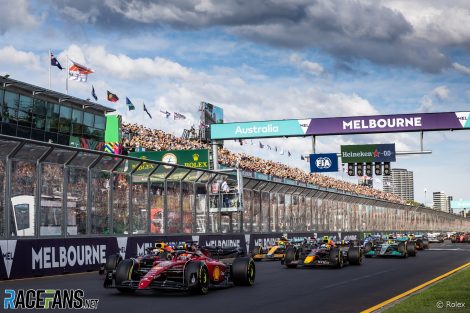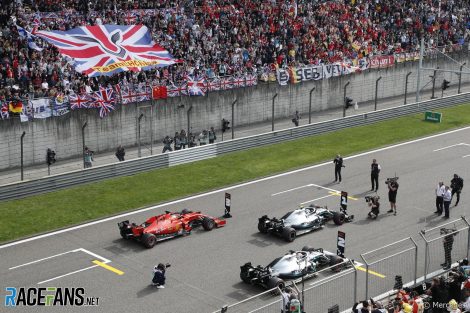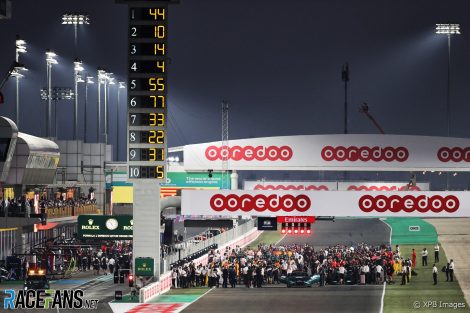Before the 2023 Formula 1 calendar was revealed, the sport’s bosses indicated they were keen to regionalise the schedule. Reducing the sport’s carbon footprint and lowering freight costs were key goals.
In theory, this was to be achieved by grouping races geographically, in the hope to cut mileage for all involved. But when the record-breaking 24-race calendar appeared, such changes turned out to be minimal.The season is set to open in Bahrain once again but one of the nearest races to that, in Abu Dhabi, will close the championship in November. Two punishing triple-headers are scheduled: Imola, Monaco and Catalunya, followed by a flyaway run of Austin-Mexico City-Sao Paulo near the end of the season.
Some of the double-headers are potentially more problematic. Azerbaijan has again been partnered with Miami, which requires all staff to digest a substantial time zone adjustment and around 15 hours of travel, with no direct flights. The highly anticipated new race on a street circuit in Las Vegas is the penultimate event of the season, following which teams and personnel are looking at a 19-hour flight to get across to Abu Dhabi for the season finale a week later. Logistically problematic.

“We don’t start each year with a blank calendar and we don’t have the freedom to put races exactly where we would like to put them,” explains F1’s sporting director Steve Nielsen.
F1 has an ideal calendar in mind it is working towards, but moving one race closer to another in the schedule to cut travel distances isn’t something which can necessarily be done from one year to the next.
Advert | Become a RaceFans supporter and
“Some of our promoter deals are historic, long-running, and they have clauses in them that don’t give us the freedom perhaps that we would like,” says Nielsen. “So we have to work closely with those promoters and sort of cajole and persuade them that we need to change things a little bit.

“So there’s a myriad of influences that determine it, and it will take some time to get to it. I think the important thing is that journey has now begun and we understand and appreciate the benefits that will come from regionalisation.”
Due to the Covid-19 pandemic, many races have disappeared and reappeared in recent years. Some only returned to the calendar in 2022, including Australia, Japan and Singapore. China is provisionally on the line-up, but with residents under Covid lockdown in areas across the country, a race looks increasingly unlikely.
It’s not just the travel complications caused by Covid which have presented problems this year, as John Williams, head of DHL UK Motorsport Logistics, explained.
“I think there is a lull still associated with Covid but logistically, this season has been more than a challenge,” he says. “Regrettably, with the situation in Russia, in Ukraine, there are so many restrictions on airspace with regards to flying personnel.
Advert | Become a RaceFans supporter and
“I’m sure that some of the team will recognise going to Japan this year was a difficult trip because if you were travelling from Europe you had restrictions. So it does make it a difficult place to get to and as a person getting from event to event is difficult.
“But we worked with Formula 1 cargo and we dedicate the aircraft and charter the aircraft and it is timed meticulously.”
Still some aspects of the 2023 calendar’s organisation present obvious areas for improvement. Besides the long journeys between double-headers, F1 will make three separate visits to the Middle East and
Australia’s round, once the regular season-opener, is a stand-alone event at the start of April. Financially and logistically it would have made more sense to pair that with another event back-to-back, with most teams based in the UK facing 24 hours of travel to Melbourne.
“Australia would be an example of an event that is, due to what happened in Covid, not where we would like it to be,” Nielsen admitted. “Traditionally it was at the start of the season, it’s not there yet, probably in the future it will be at the start of the season, but we’re trying to move it and we couldn’t do that for next year.”
With four Middle Eastern races on the calendar, two at the start of the year, as well as pre-season testing in Bahrain, Nielsen admitted their hands were tied when it came to grouping them more conveniently.
Advert | Become a RaceFans supporter and
“After talking to the teams they were not that keen, and there’s a big human element in this. We’ve got a pre-season test in the Middle East, we’ve then got a race in the Middle East and then another race in the Middle East.

Teams also have to consider the budget cap, which will fall to $135 million for the 2023 F1 season, with freight costs included. This has forced teams to operate differently this season, and according to Nielsen, has seen teams considering the logistics of flying new parts in on a Friday ahead of qualifying.
“We have seen a reduction, I think teams are very conscious now of how they spend their money and where they can economise,” added Nielsen. “If you can take less freight and spend less money, not only is the environmental impact good, but maybe it means you can make a new front wing in this new era that we’re living in.
“So we have seen that they’re paying, they were never cavalier about it, but they’ve upped their scrutiny on exactly what they take and how much of it they take.”
After F1 announced its sustainability strategy in 2019, the sport has been taking small steps towards cutting its emissions. The volumes of carbon created by its global travel is the greatest component of that.“Logistics is a big part of our carbon footprint,” Nielsen acknowledges. “Again, it’s not easy to fix those problems overnight, but we’re working on regionalising the calendar. We have a future calendar, not going to tell you from which year, but we have a future, sort of ‘perfect calendar’ some years down the line and we’re iterating gradually towards that each year.”
FIA President Mohammed Ben Sulayem recently said that the presence of 24 races is “further evidence of the growth and appeal of the sport on a global scale.” But the downside to that is the toll it takes on staff and the increasing travel which complicates its efforts to hit that net zero target. Steps are being taken in the right direction, and more progress is clearly needed in 2024 and beyond.
Advert | Become a RaceFans supporter and
2022 F1 season
- Mercedes told me “you’re wrong” about 2022 car’s problems – Hamilton
- FIA confirms all 10 F1 teams complied with 2022 cost cap
- Steiner “not ashamed” of panning “slow” Schumacher in Drive to Survive
- Albon believes year out of F1 improved him as a driver
- Hamilton sees diversity gains in F1 years on from his ‘traumatising’ experience of racism





William Olive
18th November 2022, 8:24
It won’t be completely regionalised, that would be too difficult with contracts and weather at times of the year (particularly in the Far East) and North America.
But the end of the season, flying to the Far East for two rounds, back to the UK, out to North America, back to the UK, Brazil then a bizzare trip to Abu Dhabi – would be terrible for bodyclocks and creates unnecessary flying.
Abu Dhabi should be at the start of end of the Far East trip and USA-Mexico-Brazil concluding the season.
Proesterchen (@proesterchen)
18th November 2022, 8:26
The idea of “regionalization” was silly from the get-go, especially when you’re trying to “regionalize” together places as climatically diverse as Montreal, Miami, Austin, Las Vegas and Mexico City just because they’re all in North America.
This would have only gotten worse if some foolish person had been found to fund the Formula 1 round in South Africa some had been hoping to add in the near future.
AlanD
18th November 2022, 12:24
It might not be just about the race cars. Some of the benefits of regionalization would be gained from trucking parts around. For example, Pirelli has to bring truck loads of tyres, and it probably has a ton of rain tyres which never get used all weekend at most races. TV companies have loads of gear etc that needs to move from track to track. If they can pack up stuff at the end of one weekend into a truck and drive it for two days to the next circuit, that is probably greener and more cost effective than shipping or air-freight.
DB-C90 (@dbradock)
18th November 2022, 9:57
There’s a fairly simple way to reduce the footprint. That would be to return to about 16 races per year instead of affine even more races.
Jere (@jerejj)
18th November 2022, 11:44
@dbradock 20-21 would be enough for this purpose, but doable even with 24.
Red Andy (@red-andy)
18th November 2022, 11:47
The problem is that the “perfect” calendar will always be a moving target. Race deals don’t all expire at the same time, so F1 will always be constrained by existing contracts when it’s trying to move dates around. Add to that new venues joining the calendar, each with their own set of requirements depending on geography, climate and proximity to other races, and you can see the problems mount up.
Even the hard limit of 24 races per season isn’t set in stone – the teams will no doubt accede to any request for more in exchange for more money, as they’ve done on multiple occasions in the past. Expect the calendar to get much worse before it eventually gets worse still.
Jere (@jerejj)
18th November 2022, 11:57
@red-andy 24 is the base, default, etc., upper limit with one more possible if teams voted in favor, which they most certainly won’t do, given how unhappy they’ve generally been about increasing the number of GPs over time.
Therefore, teams would no doubt vote against any request for more. I slightly fixed the part for you.
Even Domenicali has clearly said he doesn’t want any more than what’s permitted, i.e., 24, & he knows as someone who’s worked in a team.
Jere (@jerejj)
18th November 2022, 11:52
Baku & Miami have never been on consecutive weekends (of course, as Miami debuted this season), but hopefully, the race calendar will eventually become more sensible logistically.
Concerning next season specifically, as I pointed out when the schedule got released, the intention of avoiding an effective triple-header with pre-season testing & the two early-season Middle East events on consecutive weekends is good. However, a better way of doing this would be testing, followed by a free weekend (like 2021) before the two races forming a double-header like this season rather than testing & Bahrain GP on consecutive weekends/weeks followed by a fortnight gap to SA GP.
I’ve never minded Bahrain & Abu Dhabi being at opposite ends, but I wish those at the same end would always get grouped. Oh well, 2024 again.
Sao Paulo & LV the other way around on the same weekends should also be a clear-cut no-brainer.
What global climate? If weather-related, how does this aspect affect the overall thing, except for occasional events such as the Canadian GP?
I’ve already formed a theoretical 2024 race calendar with the following factors in mind: AusGP being the season-opener again (already confirmed), Qatar GP moving to the early-season phase (effectively certain), quite certain South African GP return, Chinese GP reoccurrence aided by moving the event to the post-Monza flyaway phase, near-certain Belgian GP loss, & Emilia-Romagna GP move to July.
For now, I’ve left the possible Colombia addition out & also formed the schedule so that zero triple-headers would happen.
Australian GP 25.2
Qatar/Bahrain GP 3.3
South African GP 17/24.3
Bahrain/Qatar GP 14.4
Saudi Arabian GP 21.4
Azerbaijan GP 5.5
Miami GP 12.5
Monaco GP 26.5
Spanish GP 2.6
Canadian GP 16.6
Austrian GP 30.6
British GP 7.7
Emilia-Romagna GP 21.7
Hungarian GP 28.7
Dutch GP 25.8
Italian GP 1.9
Singapore GP 15.9
Japanese GP 22.9
Chinese GP 6.10
US GP 20.10
Mexico City GP 27.10
Sao Paulo GP 10.11
LV GP 16/23.11
Abu Dhabi GP 1.12
Jere (@jerejj)
18th November 2022, 12:38
I forgot to include Ramadan covering most of March as a factor.